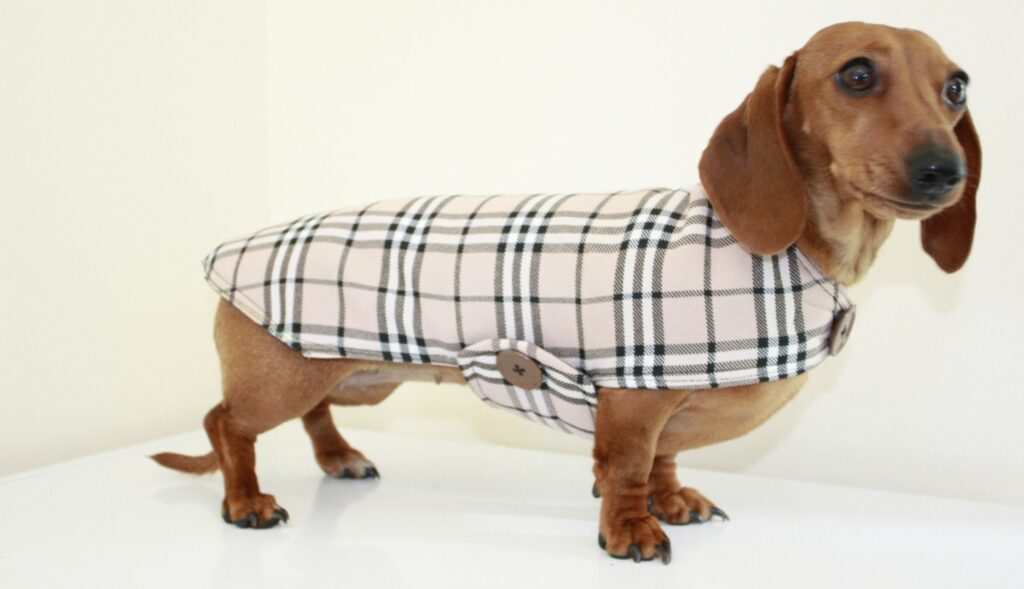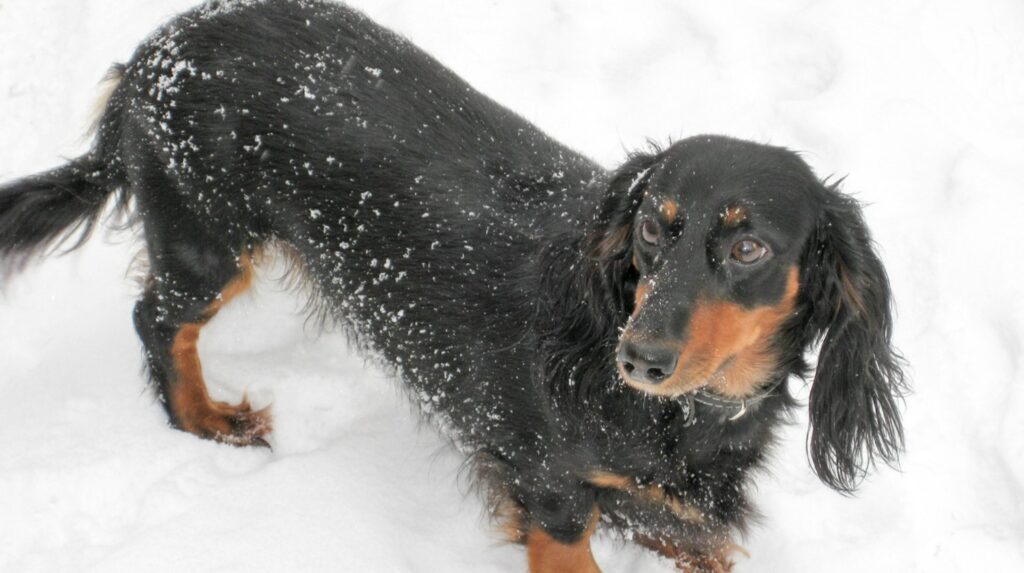Most larger dogs or dogs with thick fur don’t need to worry about getting cold. These types of dogs often like playing in colder weather. On the other hand, short-haired dogs such as dachshunds have the opposite problem.
So, do Dachshunds get cold easily?
Generally speaking, dachshunds get cold much easier making them better suited to the indoors. Dachshunds get cold easily because of their thin coat, small size, long bodies, and short legs putting them closer to the damp ground. If you own a dachshund, you have probably noticed how they like to curl up on the couch or tuck into the covers on your bed.
Keep reading to learn more.
Dachshunds Have a Thin Coat
Larger dogs, such as Labrador Retrievers, have coats that will adapt to the different seasons. In the winter months, their fur will get much thicker to keep them warm in the cold conditions, and in the spring and summer months, they will noticeably shed their fur, helping them to stay cool in the heat.
Dachshunds, or badger dogs, were initially bred as hunting dogs. A badger dog’s short legs and thin coat made them exceptional hunting dogs. Since dachshunds have been domesticated, their fur has become thinner, which is not ideal for insulating their bodies.
Wirehaired and longhaired dachshunds also have this problem but not to the same extent as smooth dachshunds. The fur is longer and double-layered but also thin and resembles human hair more than dog fur.

Dachshunds Have Short Legs
A wiener dog’s proximity to the ground makes them a prime candidate for hunting badgers, but it also means they are closer to the cold and damp conditions they walk on. Not surprisingly, for this reason, is why you’ll see dog owners dressing their dachshunds in dog clothes.
If dressing your Dachshund is not in the cards, consider carrying a dry towel to dry off your walking buddy when they get wet. You’d be shocked at how cold your doxie will get from treading lightly over grass with fresh morning dew.
That said, dachshunds will not get as cold as other smaller breed dogs, such as Chihuahuas. Wiener dogs have short legs and long bodies with a thin layer of fat, allowing them to moderately insulate heat.
The thin layer of fat helps them stay warm, but by no means are dachshunds meant to sustain colder climates such as the snow. If you live in cold weather conditions, you must dress your sausage dog in an extra layer of dog clothing.
Longhaired vs. Smooth-Haired Dachshunds
Longhaired dachshunds have a double coat which keeps them warmer in cold conditions than smooth-haired dachshunds. The fur of a longhaired dachshund is six inches long and has the thickness of a golden retriever.
The reason for their long coat is that they were bred with Spaniels. Breeders wanted to give them longer, warmer coats so they could hunt and track in cold conditions. Breeders needed to know that this took away from the work drive.
Breeding with Spaniels made the dachshunds’ temperament much calmer and less work-driven, making them perfect candidates as inside dogs. Longhaired dachshunds and wirehaired dachshunds have a coarser coat and, surprisingly, only shed twice a year.
Smooth-haired dachshunds, on the other hand, shed year-round. Standard-size smooth-haired dachshunds were bred as hunting dogs to track down badgers. The short hair helped them maneuver through the thick underbrush more easily.
Of the three types of dachshunds, smooth, longhaired, and wirehaired, smooth dachshunds are considered the working dog.

What Temperature is Too Cold for a Dachshund?
Dachshunds can tolerate weather conditions above 40 degrees Fahrenheit as long as they are moving around. It is dangerous to leave your Dachshund outside if it is below 40 degrees Fahrenheit. Comfortable winter conditions for dachshunds are between 68 and 72 degrees.
Wiener dogs were bred for warmer conditions and therefore loved to be warm. You will find your smooth Dachshund basking in the sunshine, feeling totally content. Remember that dachshunds can also overheat easily if overexerted in warmer weather conditions.
Walking your Dachshund in hot climates above 77 degrees Fahrenheit is not recommended. However, lounging around outside in warmer conditions with access to shade is what doxies prefer.
How Do I Know if My Dachshund is Cold?
- Shivering & Trembling
- Cold ears & extremities
- Abnormal walking gait
- Tucked tail & slouched head
- Making sudden stops
- Whining & Barking
- Delayed response time
- Paw sensitivity to the ground
- Zigzagging walking pattern
- Seeking shelter
Siberian huskies with thicker fur and added insulation don’t need to worry much about getting cold quickly, but smaller dogs such as dachshunds require extra protection from the extreme elements.
A dog rain jacket or dog clothing is highly recommended if you walk your Dotson in wet, snowy, or cold conditions. Dog rain boots are essential if you contemplate walking your Dachshund in snowy conditions.
Pay close attention to your Dachshund’s behavior in cold climates and look for the ten signs and symptoms listed above to prevent any potentially dangerous situations.
Final Words
Dachshunds were originally bred for hunting in warm conditions but can tolerate moderately cold climates reasonably well compared to other small breed dogs.
When sedentary, having a thin layer of fat around their long bodies allows them to be comfortable in weather that is 68 degrees Fahrenheit and above. If you are contemplating walking your Dachshund in cold weather, it is not advised to go outside if the temperature is below 40 degrees Fahrenheit.
Longhaired and wirehaired dachshunds will stay marginally warmer than smooth dachshunds thanks to their double-layered fur and longer dog coat.
Look out for signs of distress if you walk your Dachshund in cold weather. Dress your doxie in dog clothing, such as a dog rain jacket and dog boots, to help keep them warm in the cold.
Reward your dog with treats while putting on and taking off their dog’s winter clothes to imprint a positive experience. Keeping all this in mind will foster a lasting relationship between you and your fluffy friend.

